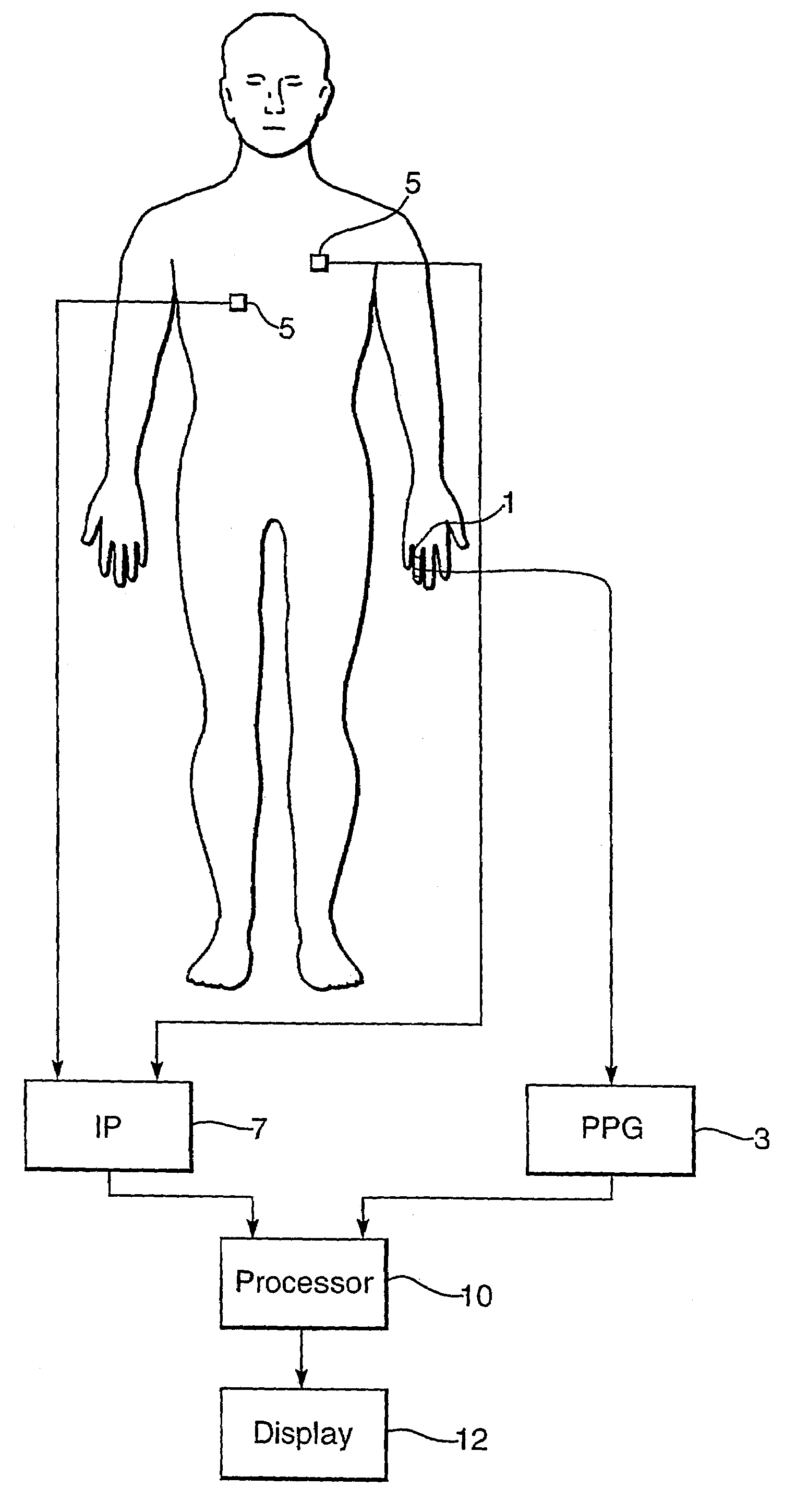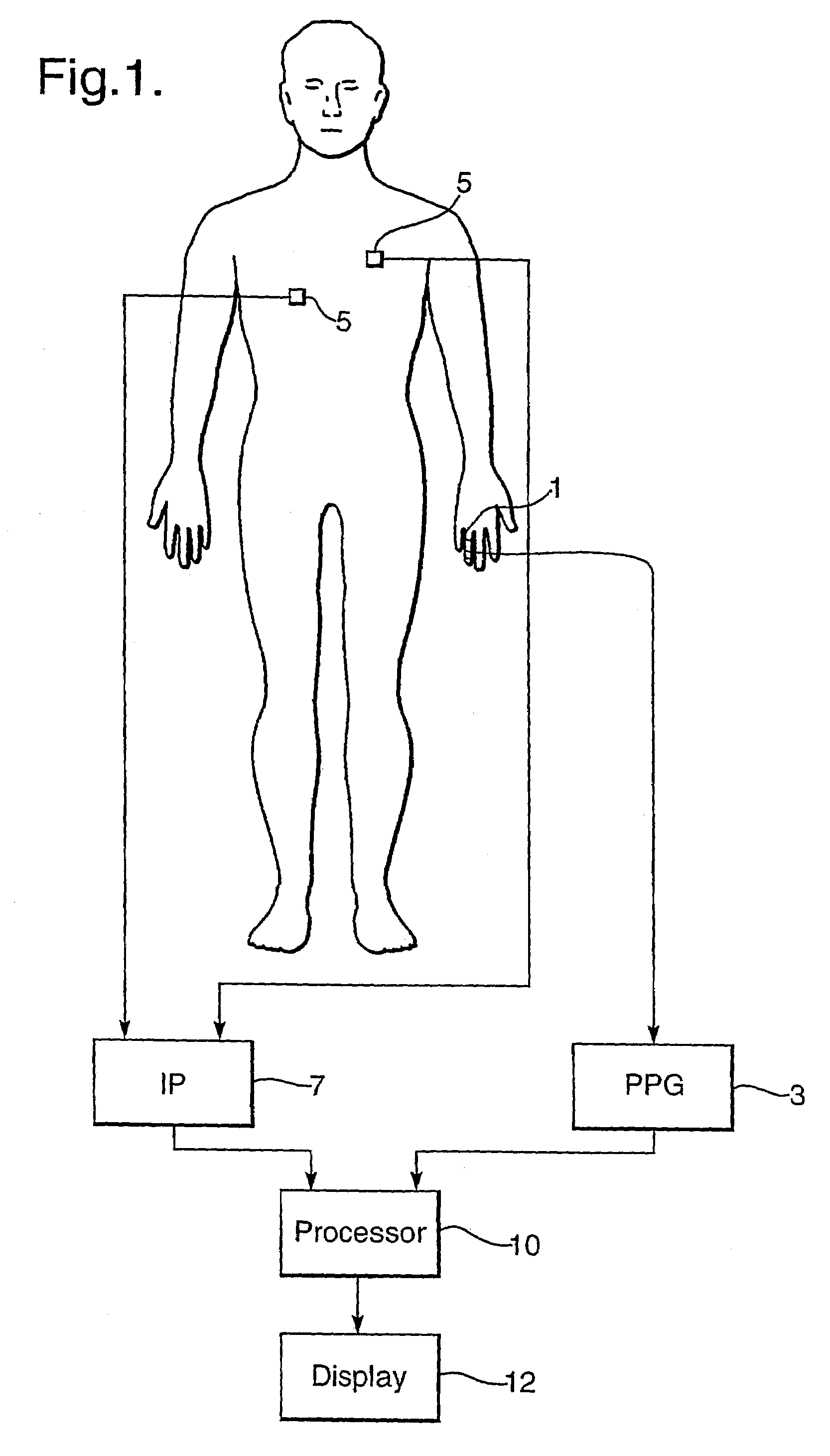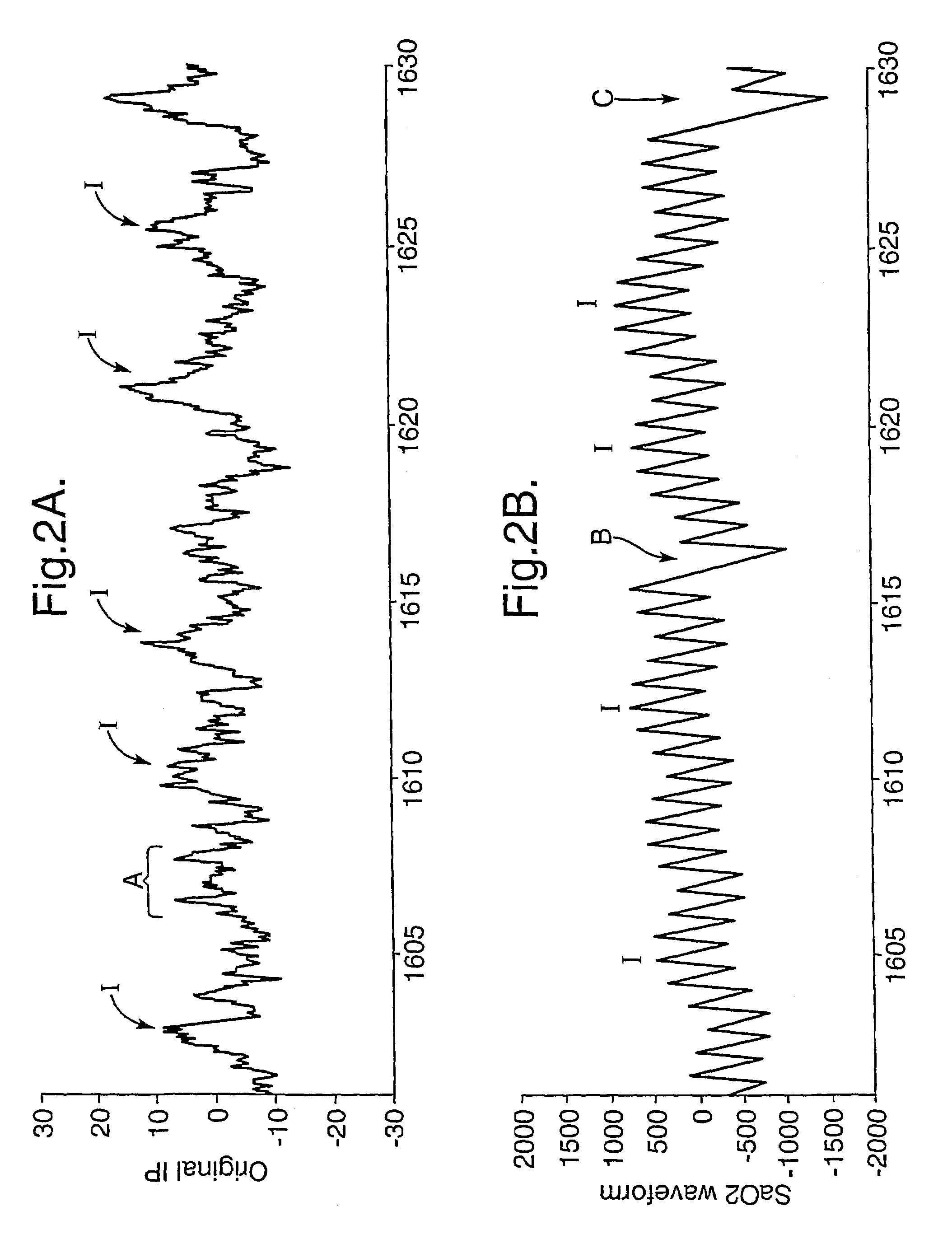Combining measurements from breathing rate sensors
- Summary
- Abstract
- Description
- Claims
- Application Information
AI Technical Summary
Benefits of technology
Problems solved by technology
Method used
Image
Examples
Embodiment Construction
[0027]An embodiment of the invention will now be described in which the invention is applied in the medical field for the measurement of breathing rate using the two signals described above, namely the impedance pneumography and photoplethysmography signals. The results of applying this to the data of FIGS. 2 to 5 will be illustrated.
[0028]FIG. 1 schematically illustrates a breathing rate measurement apparatus in accordance with an embodiment of the invention. A PPG signal is obtained, as illustrated from a finger of a patient, though the signal can also be obtained from the earlobe, using a conventional PPG sensor 1 which is driven by and supplies its output to PPG apparatus 3. An IP signal is obtained by conventional IP equipment 7 using two electrodes 5 (though four electrodes may be used, with a pair for current injection and a pair for voltage measurement). The IP apparatus 7 and PPG apparatus 3 supply their signals to a processor 10 which processes the signals in the manner to...
PUM
 Login to View More
Login to View More Abstract
Description
Claims
Application Information
 Login to View More
Login to View More - R&D
- Intellectual Property
- Life Sciences
- Materials
- Tech Scout
- Unparalleled Data Quality
- Higher Quality Content
- 60% Fewer Hallucinations
Browse by: Latest US Patents, China's latest patents, Technical Efficacy Thesaurus, Application Domain, Technology Topic, Popular Technical Reports.
© 2025 PatSnap. All rights reserved.Legal|Privacy policy|Modern Slavery Act Transparency Statement|Sitemap|About US| Contact US: help@patsnap.com



